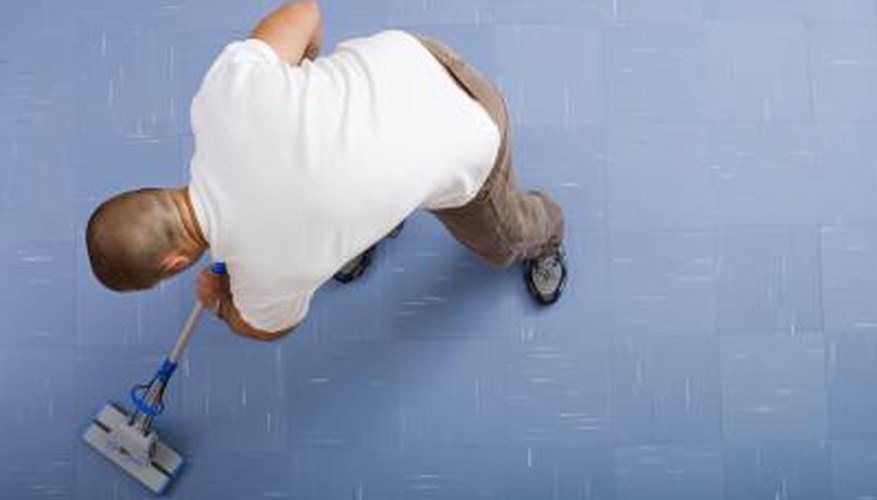All vinyl flooring products require adhesive. Whether you are installing sheet vinyl or vinyl tiles, you have options available to you. There are several factors to consider when choosing the type and style of vinyl flooring you will use. Your vinyl flooring choice will determine the type of adhesive system you will use.
Considerations
Consider the underlayment that the vinyl flooring will be on. Concrete, as a subfloor, is prone to problems for two reasons -- moisture and pH levels. Concrete is a porous material, it will always contain some amount of moisture. Too much moisture will adversely affect the vinyl adhesive, ultimately causing it to fail. There is a simple test you can do to determine if there is too much water vapour being released by the concrete. Tape a 60 x 60 cm (2 x 2 foot) piece of plastic to the concrete surface and wait for 72 hours. If there is water vapour under the plastic, you have a moisture problem. The floor can be sealed, but make sure the sealer is compatible with the adhesive you will be using. The other problem with concrete is the pH level of the concrete. Concrete tends to be acidic. High acid levels will cause the vinyl adhesive to fail. Concrete can be treated for this problem, but it requires a licensed contractor to treat the concrete. Wood underlayis an acceptable subfloor as long as it is dry. It may be necessary to replace the plywood underlay if it is damaged from moisture due to the failure of the previous floor covering. Whichever type of subfloor you have, make sure that the subfloor is clean and free from contaminants and moisture prior to vinyl installation, or you will have problems with adhesion and vinyl staining.
- Consider the underlayment that the vinyl flooring will be on.
- Whichever type of subfloor you have, make sure that the subfloor is clean and free from contaminants and moisture prior to vinyl installation, or you will have problems with adhesion and vinyl staining.
Options
Vinyl flooring is available in two basic applications -- sheet vinyl and vinyl tile squares. Sheet vinyl comes in 1.2 or 1.8 m (4 or 6 foot) wide rolls of various design and thickness. Vinyl tile squares come in 30 x 30 cm (12 x 12 inch) or 45 x 45 cm (18 x 18 inch) squares, which are available in various colour and design options. Both types of vinyl flooring are manufactured as traditional or self-sticking. Traditional vinyl products require the use of a vinyl adhesive applied to the subfloor prior to installation. Self-sticking vinyl products are manufactured with adhesive already applied to the back of the vinyl. The adhesive is protected by a paper or film covering, which needs to be removed prior to installation.
- Vinyl flooring is available in two basic applications -- sheet vinyl and vinyl tile squares.
- The adhesive is protected by a paper or film covering, which needs to be removed prior to installation.
Best choice
The easiest and best choice for gluing vinyl flooring is to use the self-sticking vinyl squares. Traditional vinyl adhesives are difficult to work with, messy and potentially toxic during installation. The quality of self-adhesive vinyl has improved to the point that you are no longer required to add additional adhesive to the subfloor to ensure proper adhesion.
